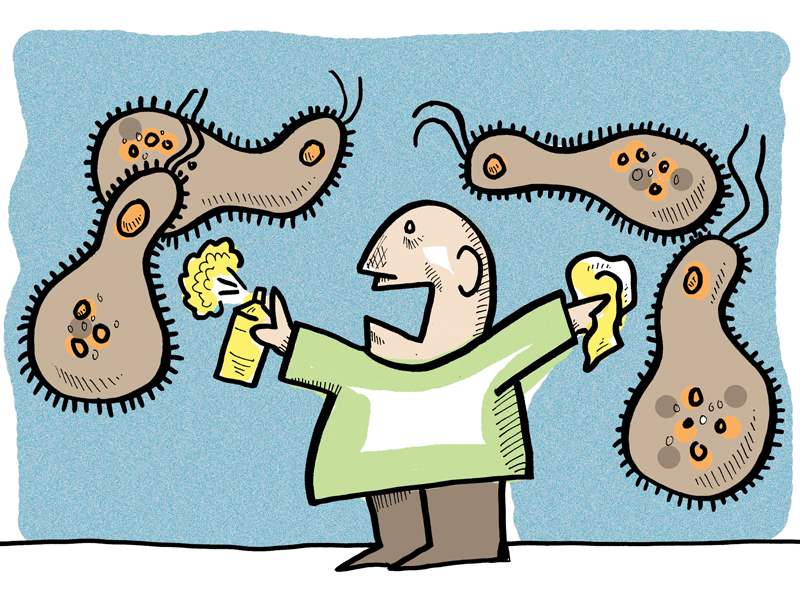Common antimicrobial agents found in household products were found to de-energize cells, also impair hormone response.
“Disinfectants that we are putting on and in our bodies, and using in our environment, have been shown to inhibit mitochondrial energy production and the cellular estrogen response,” explained biochemist Gino Cortopassi, Ph.D., in the UC Davis School of Veterinary Medicine. “This raises concern because exposure to other mitochondrial-inhibiting drugs, such as rotenone and MPTP (1-methyl-4-phenyl-1,2,3,6-tetrahydropyridine), is associated with increased risk for Parkinson’s disease.”
The team from the University of California, Davis, have found common antiseptic ingredients- known as “quats” or quaternary ammonium compounds to inhibit mitochondria, the powerhouses of the cell, as well as estrogenic functions in cells.
According to the researchers, toothpastes, mouthwashes, lozenges, nasal sprays, eye drops, shampoos, lotions, intravaginal spermicidal sponges, and household cleaners all contain quats.
The study involved surveying about 1,600 compounds and drugs in household and pharmaceutical use, with multiple measures of mitochondrial function, which were found to be comprising of quats that seemed to inhibit mitochondrial function and estrogen signaling.
Furthermore, the researchers also found that quats, at the same concentrations that inhibited mitochondria, inhibited estrogen signaling in cells.
Estrogen is a sex hormone responsible for secondary
sexual characteristics in females. And the mitochondria are critical cell structures that generate energy. Like a train delivering its payload among stations, electrons pass through five stations of the mitochondria to produce maximal cell energy. If the train is derailed at any of those stops, it can’t deliver its payload of energy down the line for the cell to use. “Because exposure to quats is also interrupting the sex hormone estrogen response in cells, it could also potentially cause reproductive harm in animals or humans, and others have shown that quats cause reproductive toxicity in animals,” Cortopassi said.“Our study in cells provides a mechanism for their observations in laboratory animals,” said Sandipan Datta, Ph.D., a postdoctoral scholar in Dr. Cortopassi’s laboratory.
“They demonstrated that quat exposure caused reproductive toxicity in both females and males. The antiestrogenic effects we see in cells could explain the female reproductive toxicity they observed, such as less estrus cycles and lower breeding rates.”
“This paper adds to the growing number of studies which find that quats may not be as safe as previously believed,” said Terry Hrubec, associate professor at Edward Via College of Osteopathic Medicine, in the the context of many companies planning to replace triclosan in products owing to complaints of impaired muscle function with quats.
“The fact that six out of the 10 most potent mitochondrial inhibitors were quats shows that this class of chemicals likely affects living systems. The results from this study are concerning because almost everyone is exposed to quats on a regular basis.” Hrubec concluded.






























